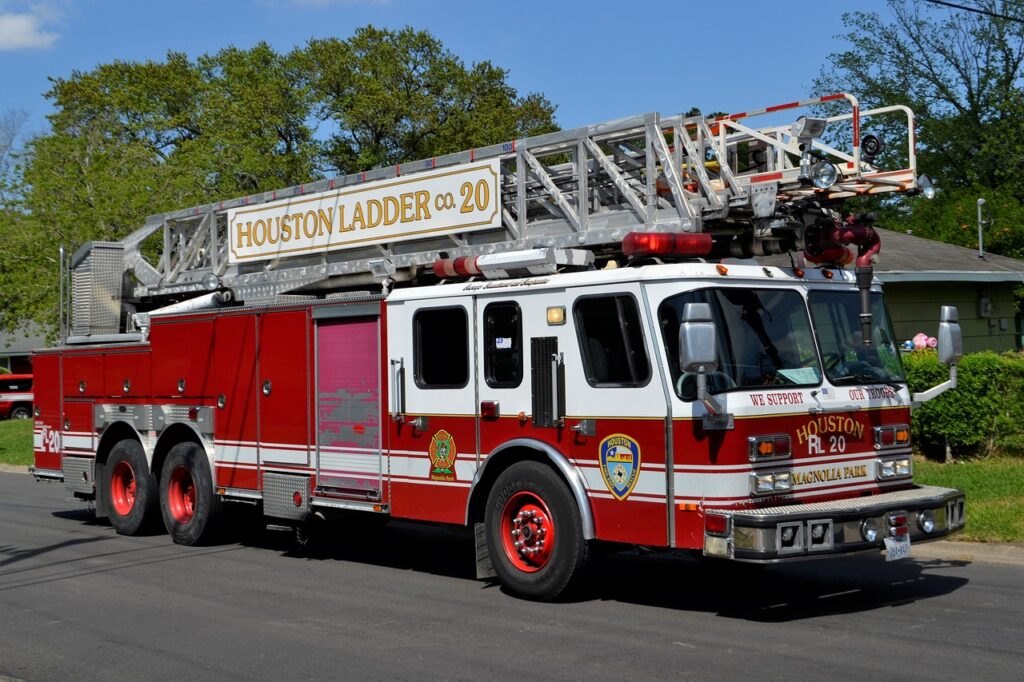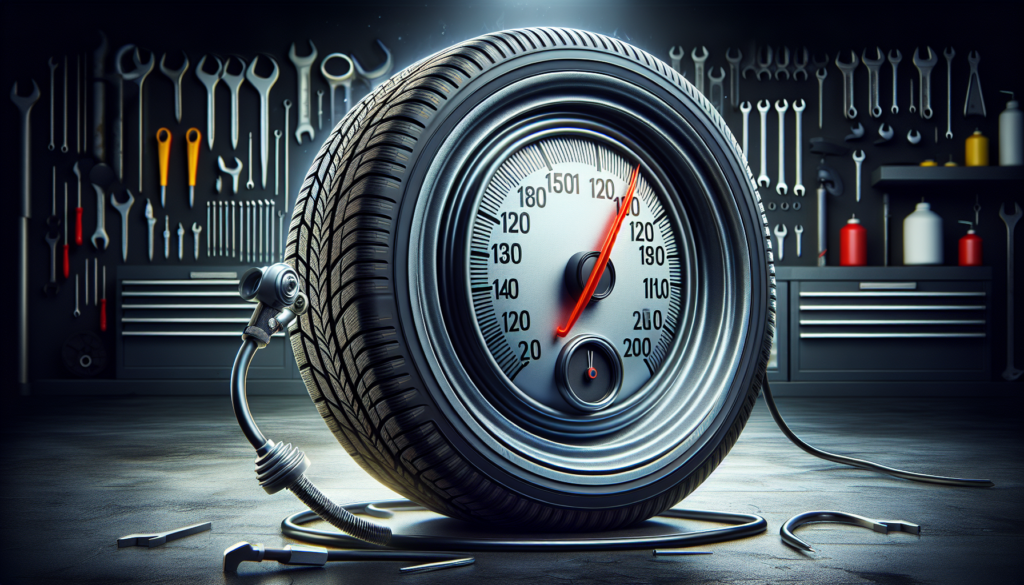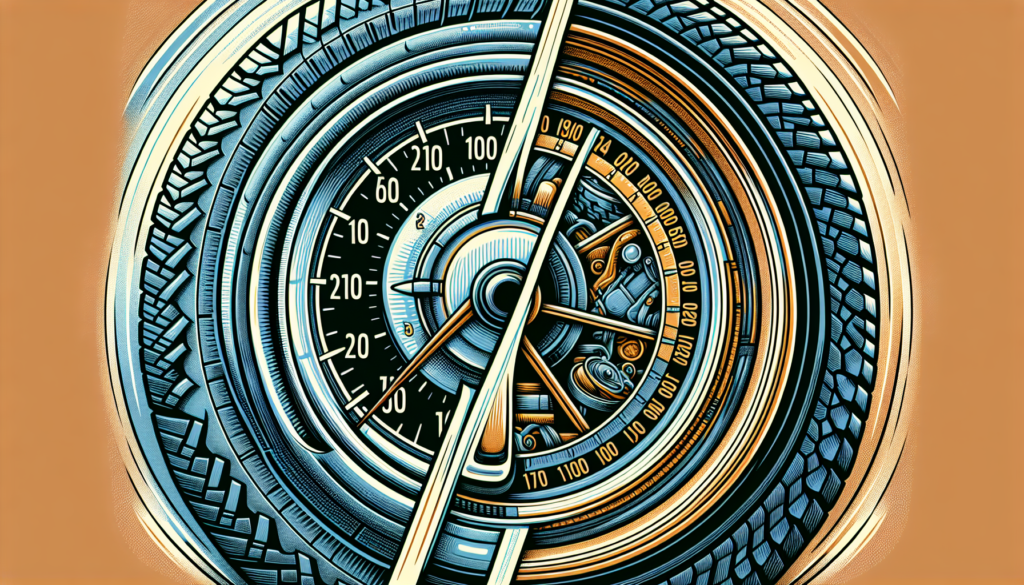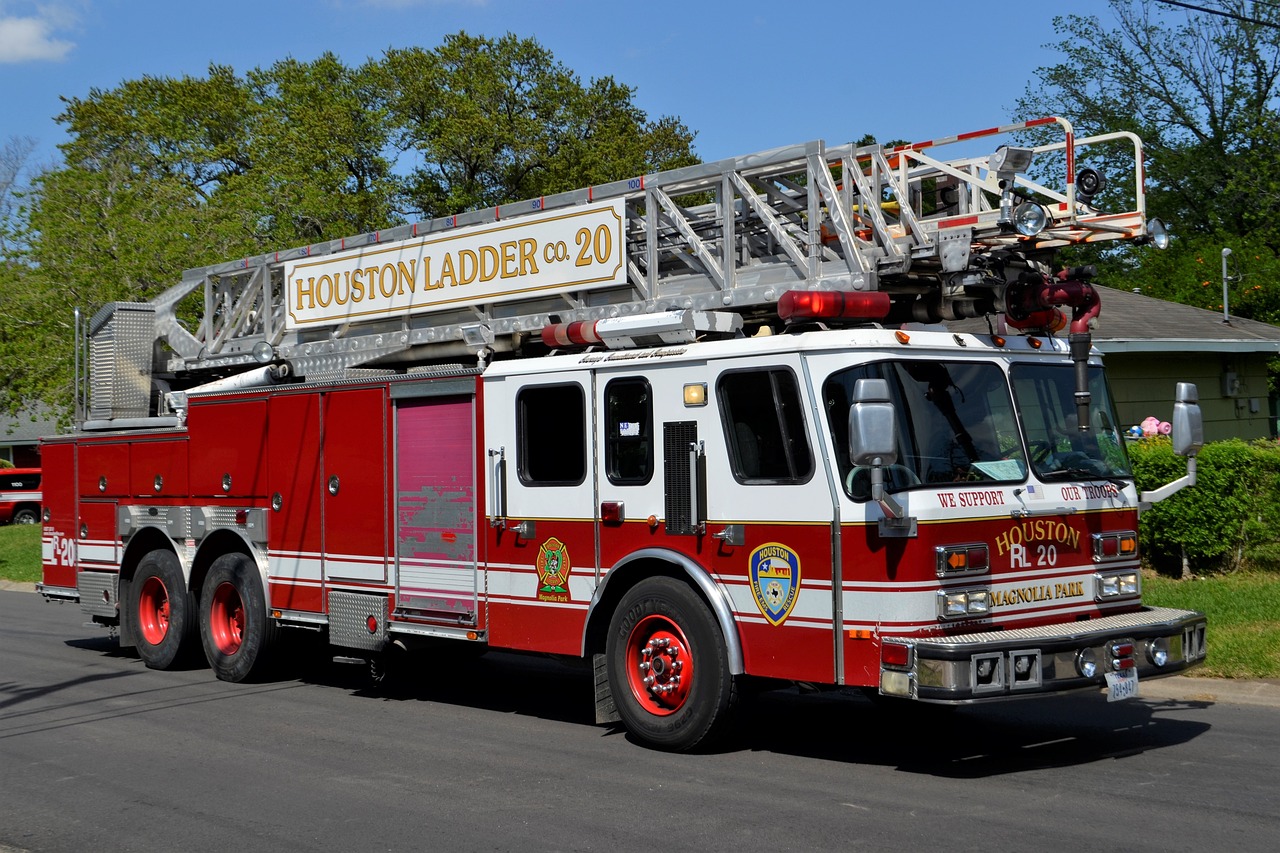Imagine driving down the open road, wind blowing through your hair, and the thrill of the engine roaring. But have you ever stopped to wonder how accurate your speedometer really is? Surprisingly, the answer may lie in something as simple as your tire pressure. Yes, you heard it right! The question arises – can incorrect tire pressure actually affect the accuracy of your speedometer? Join us as we explore this intriguing phenomenon and uncover the surprising relationship between tire pressure and speedometer accuracy. Buckle up, my friend, because this is going to be a captivating ride!
Effects of Incorrect Tire Pressure on Speedometers
Tire Pressure and Speedometer Accuracy
When it comes to ensuring the accuracy of speedometer readings, tire pressure plays a critical role. The pressure of your tires directly impacts the rolling circumference, which in turn affects the speedometer readings. If your tire pressure is not at the recommended level, it can result in speedometer inaccuracies.
Factors Affecting Speedometer Accuracy
Several factors can influence the accuracy of a speedometer, aside from incorrect tire pressure. These factors include initial speedometer calibration, wheel and tire size deviations, transmission gear ratios, and tire wear and tread depth. While all of these factors play a role in determining speedometer accuracy, incorrect tire pressure remains a significant contributor.
Importance of Correct Tire Pressure
Maintaining the correct tire pressure is crucial for various reasons, including speedometer accuracy. Proper tire inflation ensures your safety on the road, enhances fuel efficiency, optimizes vehicle performance, and helps maintain the accuracy of your speedometer. Neglecting to maintain the correct tire pressure can not only impact speedometer readings but also pose risks to your overall driving experience.
Understanding Speedometer Calibration
Speedometer calibration is the process of adjusting the speedometer to provide accurate readings. When it comes to tire pressure, speedometer calibration ensures that the speedometer takes into account the impact of incorrect tire pressure on rolling circumference. By calibrating the speedometer, you can maintain accurate readings even with varying tire pressures.
How Incorrect Tire Pressure Influences Speedometer Readings
Effect on Tire Rolling Circumference
Tire rolling circumference refers to the distance a tire travels in one revolution. Incorrect tire pressure directly affects this rolling circumference, which ultimately influences the accuracy of speedometer readings. When tire pressure is too low, the rolling circumference decreases, leading to higher speedometer readings. Conversely, when tire pressure is too high, the rolling circumference increases, resulting in lower speedometer readings.
Under-Inflated Tires and Speedometer Readings
Under-inflated tires are a common issue that can affect speedometer readings. When tires are under-inflated, they have a smaller rolling circumference, causing the speedometer to overestimate the speed. For example, if your speedometer indicates you are driving at 60 mph, you may actually be traveling at a slightly lower speed due to the under-inflated tires.
Over-Inflated Tires and Speedometer Readings
On the other hand, over-inflated tires can also impact speedometer readings. When tires are over-inflated, their rolling circumference increases. This causes the speedometer to underestimate the speed. For instance, if your speedometer indicates a speed of 60 mph, you might actually be driving at a slightly higher speed due to the over-inflated tires.
Difference in Tire Pressure and Speedometer Variations
The difference in tire pressure can lead to notable variations in speedometer readings. Even a slight deviation from the recommended tire pressure can result in speedometer discrepancies. It is important to note that these variations depend on the severity of under-inflation or over-inflation. The larger the difference in tire pressure, the more significant the impact on speedometer accuracy.

Factors Impacting Speedometer Accuracy
Initial Speedometer Calibration
When a vehicle is manufactured, the speedometer is initially calibrated to provide accurate readings. However, the calibration takes into account certain assumptions about tire pressure, wheel and tire size, transmission gear ratios, and tire wear. If any of these factors deviate from their expected values, speedometer accuracy can be affected.
Wheel and Tire Size Deviations
Changes in wheel and tire size can impact speedometer accuracy. If you switch to larger or smaller wheels and tires without recalibrating the speedometer, it can lead to inaccurate readings. This is because the rolling circumference differs between different wheel and tire sizes, affecting the speedometer’s ability to measure speed accurately.
Transmission Gear Ratios
Transmission gear ratios also play a part in determining speedometer accuracy. If your vehicle’s transmission has been modified, such as changing gear ratios, it can affect the speedometer readings. This happens because the speedometer relies on these gear ratios to calculate and display the vehicle’s speed.
Tire Wear and Tread Depth
As tires wear down over time, their rolling circumference can change. Uneven wear or insufficient tread depth can lead to variations in tire size, affecting speedometer accuracy. Regularly monitoring and maintaining proper tire wear and tread depth is important not only for safety reasons but also for ensuring the accuracy of your speedometer readings.
The Role of Correct Tire Pressure
Proper Tire Inflation and Safety
Maintaining the correct tire pressure is crucial for your safety on the road. Under-inflated or over-inflated tires can lead to reduced grip, compromised handling, and increased braking distances. By keeping your tires properly inflated, you ensure optimal contact with the road surface, reducing the risk of accidents and promoting safer driving conditions.
Enhanced Fuel Efficiency
Correct tire pressure also contributes to enhanced fuel efficiency. Under-inflated tires create more rolling resistance, requiring your vehicle’s engine to work harder and consume more fuel. On the other hand, over-inflated tires can result in decreased fuel economy due to decreased contact patch and increased tire wear. By maintaining the recommended tire pressure, you can optimize your vehicle’s fuel efficiency.
Optimized Vehicle Performance
Proper tire inflation directly impacts your vehicle’s performance. Under-inflated tires can negatively affect acceleration, handling, and overall responsiveness. Over-inflated tires, on the other hand, can cause a harsher ride and reduced comfort. By ensuring the correct tire pressure, you optimize your vehicle’s performance and enjoy a smoother and more comfortable driving experience.
Maintaining Speedometer Accuracy
Correct tire pressure is vital for maintaining the accuracy of your speedometer. By keeping your tires inflated to the recommended pressure, speedometer variations due to tire pressure changes are minimized. This ensures that your speedometer readings reflect your actual speed, allowing you to drive confidently within the legal limits and avoid any potential legal implications.

Understanding Speedometer Calibration
Speedometer Calibration Process
Speedometer calibration involves adjusting the speedometer to accurately reflect the speed of the vehicle. During calibration, technicians fine-tune the speedometer to account for various factors that can affect accuracy, including tire pressure. By calibrating the speedometer, you can ensure that it provides precise readings even with changes in tire pressure.
Calibrating Speedometers for Tire Pressure
To calibrate a speedometer for tire pressure, technicians consider the rolling circumference changes caused by under-inflation or over-inflation. They make adjustments to the speedometer’s settings to compensate for the impact of tire pressure on speedometer accuracy. This calibration process ensures that the speedometer displays accurate readings regardless of tire pressure variations.
Benefits of Regular Calibration
Regular calibration of the speedometer offers multiple benefits. Firstly, it helps maintain accurate speed measurements, ensuring you stay within the legal speed limits. Secondly, calibration helps prolong the lifespan of your tires by preventing excessive wear caused by incorrect speedometer readings. Lastly, it promotes a smoother driving experience and reduces the risk of accidents resulting from speedometer inaccuracies.
Professional Speedometer Calibration
While basic speedometer calibration can be done manually, it is recommended to seek professional help for accurate and precise calibration. Professional technicians have the expertise and specialized tools to ensure the speedometer is calibrated correctly for tire pressure variations. By entrusting the calibration process to professionals, you can have peace of mind knowing that your speedometer will provide accurate readings.
Impact of Under-Inflated Tires on Speedometer Readings
Reduced Tire Rolling Circumference
Under-inflated tires have a reduced rolling circumference, which can lead to speedometer inaccuracies. When the tire pressure is lower than recommended, the tire compresses more, decreasing the distance it covers per revolution. This reduction in rolling circumference causes the speedometer to indicate a higher speed than the actual speed of the vehicle.
Increased Speedometer Indicated Speed
Due to the reduced rolling circumference of under-inflated tires, the speedometer shows a higher speed than you are actually traveling. For example, if your speedometer indicates a speed of 60 mph, you might be driving at a slightly lower speed due to the under-inflated tires. This discrepancy can mislead you and potentially lead to unintentional speeding.
Potential Legal Implications
Driving with under-inflated tires can have legal implications as well. If your speedometer inaccurately indicates a higher speed, you may unknowingly exceed the legal speed limits. This can result in traffic violations, fines, and even penalties. It is important to maintain correct tire pressure and ensure the accuracy of your speedometer to avoid any legal repercussions.

Impact of Over-Inflated Tires on Speedometer Readings
Increased Tire Rolling Circumference
Over-inflated tires have an increased rolling circumference, which affects speedometer readings. When the tire pressure is higher than recommended, the tire does not compress as much, covering a longer distance per revolution. This increased rolling circumference causes the speedometer to display a lower speed compared to the actual speed of the vehicle.
Decreased Speedometer Indicated Speed
Due to the increased rolling circumference of over-inflated tires, the speedometer shows a lower speed than you are actually traveling. For instance, if your speedometer indicates a speed of 60 mph, you might be driving at a slightly higher speed due to the over-inflated tires. This disparity can lead to a false sense of security and potentially result in unintentional speeding.
Safety Concerns
Driving with over-inflated tires poses safety concerns as well. Over-inflation can result in decreased traction and control, which can compromise your ability to steer, brake, and handle your vehicle safely. The reduced contact patch due to over-inflated tires can also lead to uneven tire wear, decreasing overall tire performance and potentially increasing the risk of accidents.
Comparing Tire Pressure and Speedometer Variations
Influence of Under-Inflation vs. Over-Inflation
Both under-inflation and over-inflation can impact speedometer accuracy, but they have opposite effects. Under-inflated tires lead to higher speedometer readings, while over-inflated tires result in lower speedometer readings. It is crucial to find the right balance and maintain the recommended tire pressure to achieve accurate speedometer readings.
Magnitude of Speedometer Discrepancies
The magnitude of speedometer discrepancies due to tire pressure variations depends on the severity of under-inflation or over-inflation. The greater the difference from the recommended tire pressure, the larger the impact on speedometer accuracy. It is important to regularly monitor and maintain the correct tire pressure to minimize speedometer discrepancies.
Accurate Speed Measurements
By maintaining the recommended tire pressure, you ensure accurate speed measurements on your speedometer. This allows you to drive confidently, knowing that your speedometer readings reflect your actual speed. Accurate speed measurements are essential for staying within legal speed limits, maintaining safety on the road, and avoiding any potential legal consequences.

Understanding Initial Speedometer Calibration
Manufacturers’ Speedometer Calibration
When vehicles are manufactured, the speedometers are calibrated by the manufacturers. During this initial calibration, the speedometers are set to display accurate readings based on certain assumptions about tire pressure, wheel and tire size, transmission gear ratios, and tire wear. However, these assumptions may not always align with the actual conditions of your individual vehicle.
Variances and Allowable Tolerances
Speedometer calibration has tolerances to accommodate minor deviations from the assumed conditions. These allowable tolerances ensure that slight variations in tire pressure, wheel and tire size, transmission gear ratios, and tire wear can be accounted for without affecting speedometer accuracy. However, significant deviations may require recalibration to ensure precise speedometer readings.
Compensation for Tire Pressure Effects
While initial speedometer calibration takes into account various factors, including tire pressure, it may not fully compensate for the impact of tire pressure deviations on speedometer accuracy. The calibration process aims to provide accurate readings within the given tolerances. To ensure the most precise speedometer readings, regular calibration is recommended, particularly when there are significant changes in tire pressure.
Speedometer Accuracy Certifications
To ensure speedometers meet certain accuracy standards, manufacturers’ calibration processes undergo certifications. These certifications verify that the speedometers are calibrated to display accurate readings within specified tolerances. This certification provides reassurance to vehicle owners that their speedometers are calibrated correctly and will provide precise speed measurements.
Maintenance Practices for Maintaining Accuracy
Regular Tire Pressure Checks
Regularly checking tire pressure is essential for maintaining speedometer accuracy. It is recommended to check tire pressure at least once a month and before long trips. Use a reliable tire pressure gauge to measure the pressure and adjust it to the recommended level. By keeping your tires properly inflated, you ensure accurate speedometer readings and various other benefits.
Using Recommended Tire Pressure
Consult your vehicle’s owner’s manual or the tire pressure placard on the driver’s door jamb to determine the recommended tire pressure. Follow these guidelines when inflating your tires and make sure to adjust the pressure according to the specific load conditions. Using the correct tire pressure not only maintains speedometer accuracy but also promotes safety, fuel efficiency, and optimal vehicle performance.
Monitoring Tire Wear
Regularly inspecting your tires for signs of wear is crucial for maintaining speedometer accuracy. Uneven wear can lead to variations in tire size, affecting speedometer readings. If you notice any abnormal wear patterns or tread depth discrepancies, consult with a professional to address the issue promptly. By monitoring tire wear, you can preserve the accuracy of your speedometer and ensure your tires are in optimal condition.
Periodic Speedometer Calibration
While regular calibration may not be necessary for average driving conditions, it is recommended to consider periodic speedometer calibration. Schedule a calibration session with a professional if you have made significant changes to your tires, wheels, or transmission gear ratios. Additionally, if you notice consistent speedometer discrepancies, calibration can help fine-tune the speedometer for precise readings.


